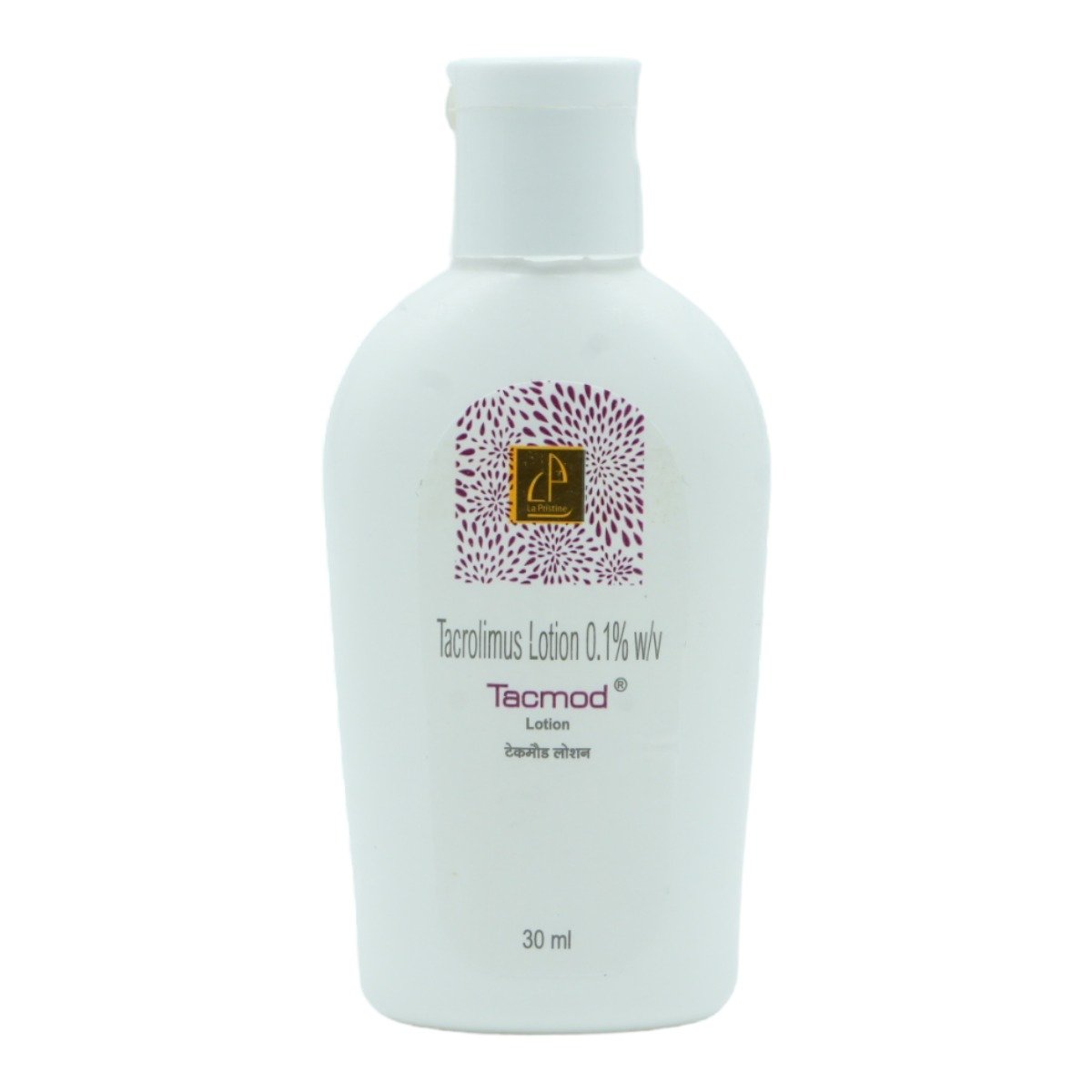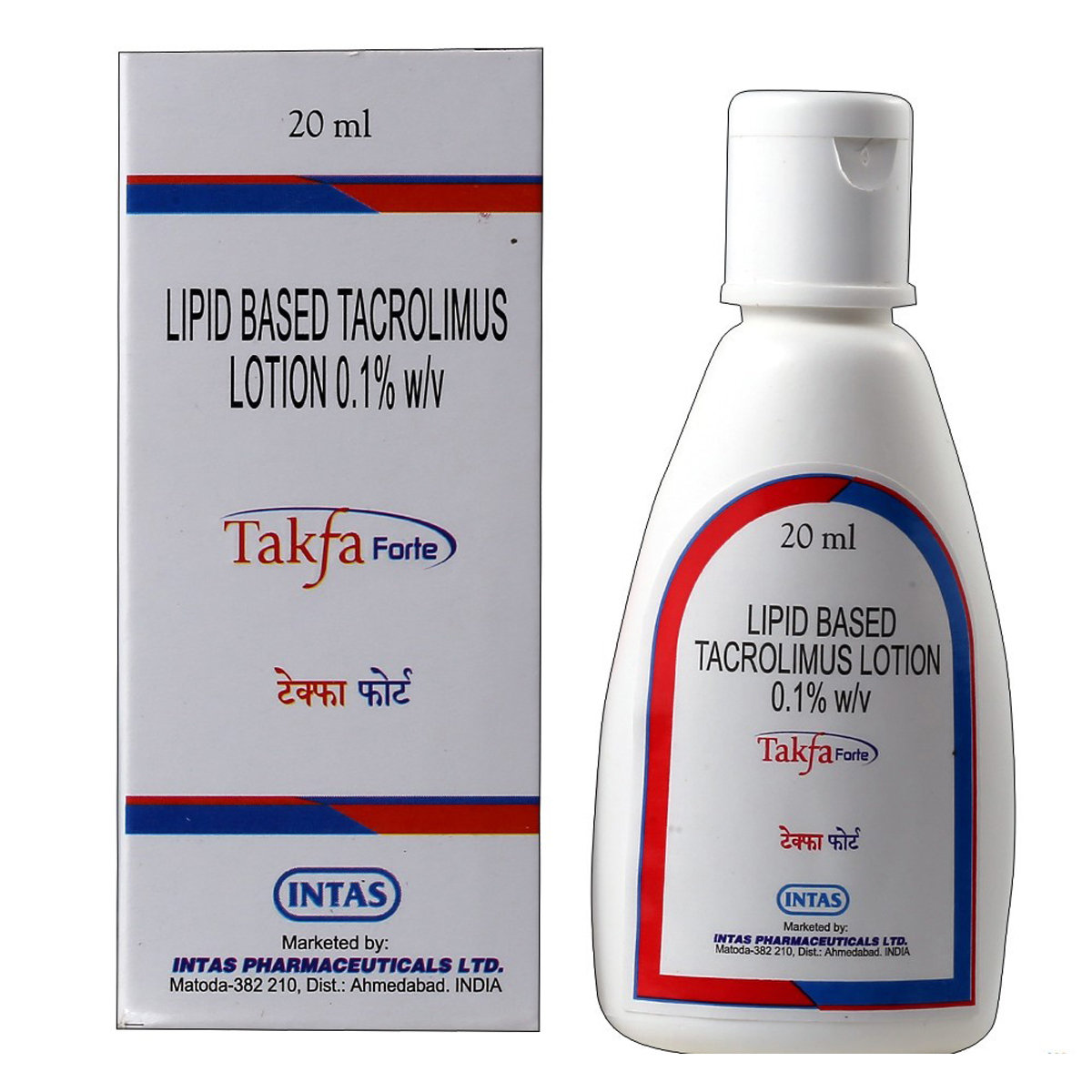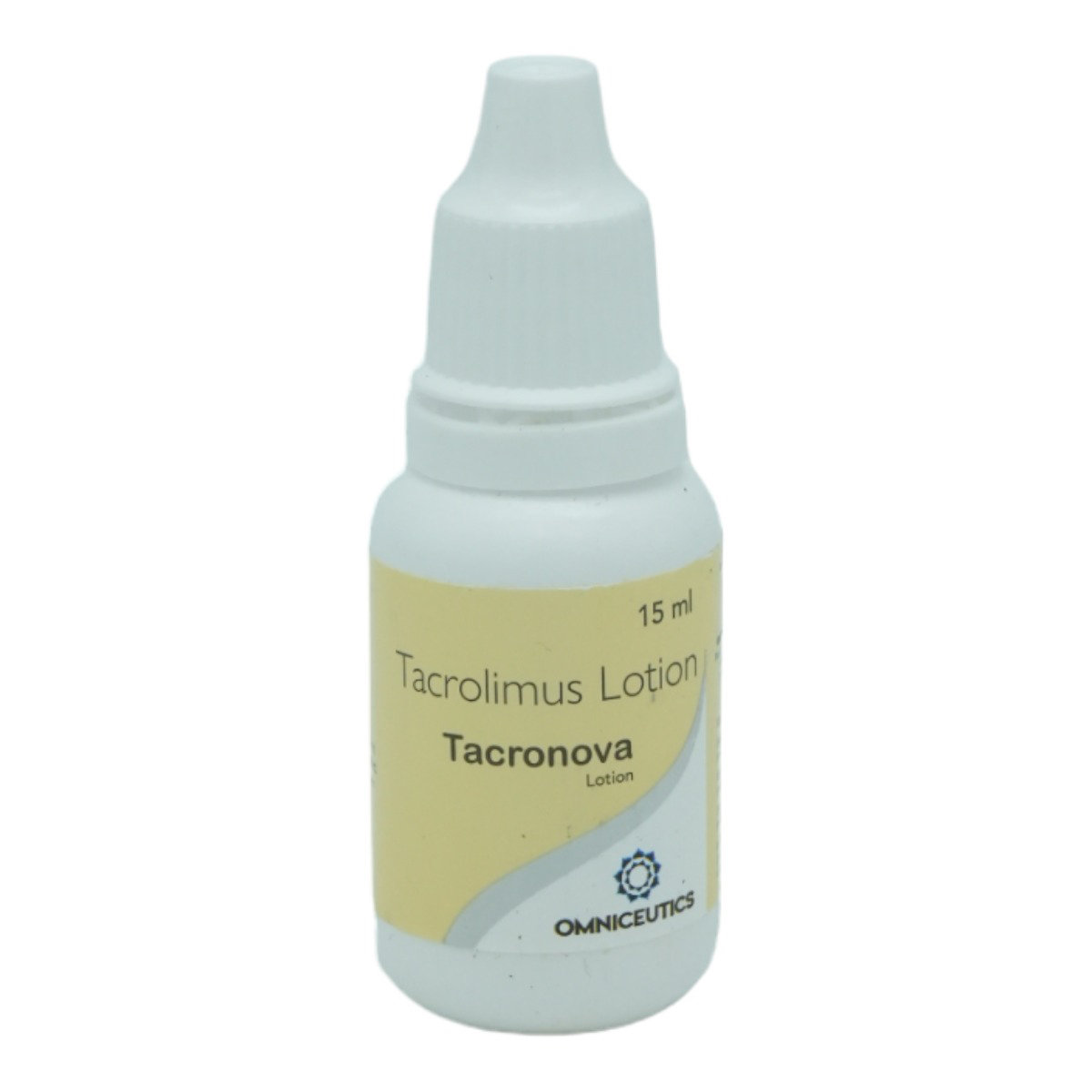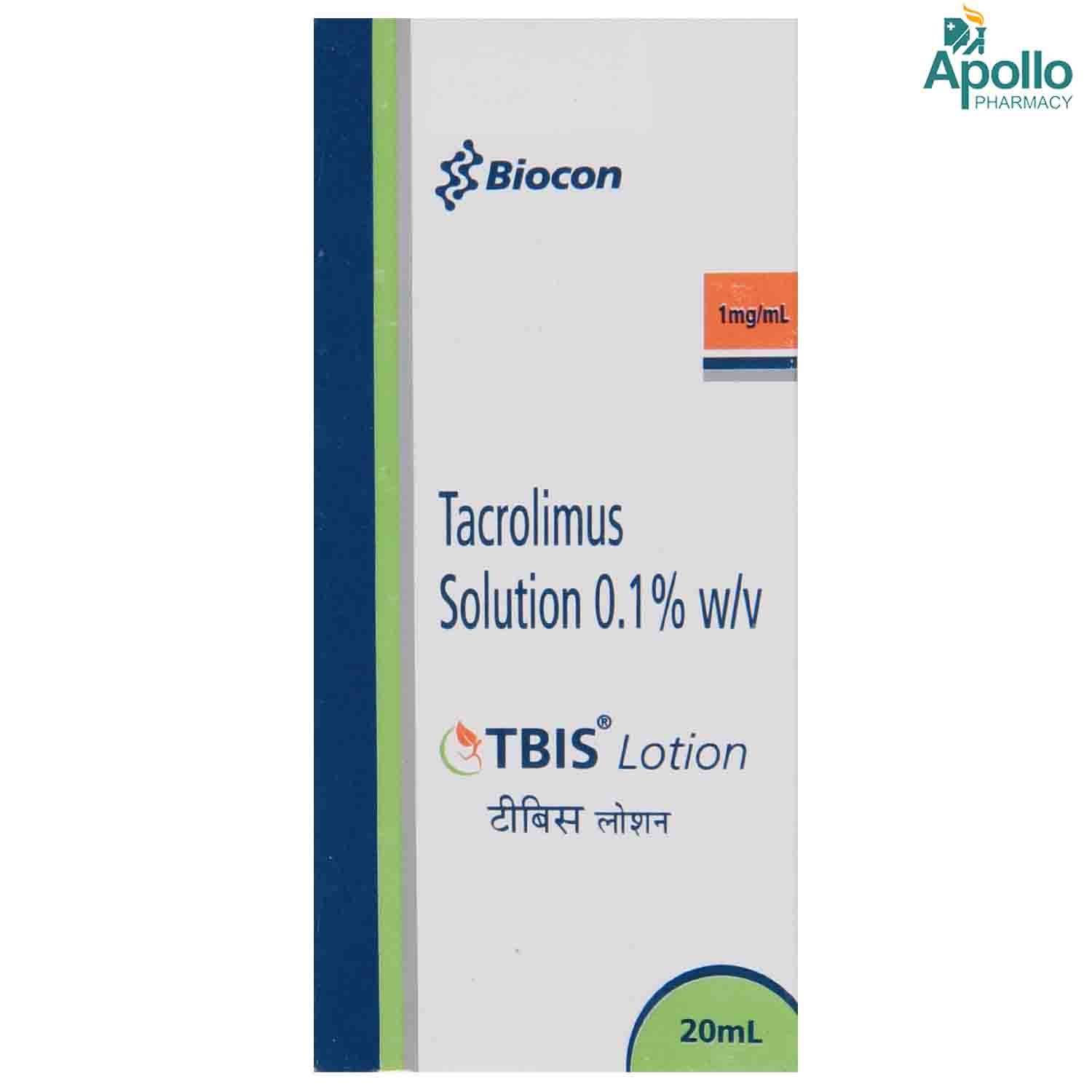Tacrovin Lotion 15 ml

MRP ₹142
(Inclusive of all Taxes)
₹21.3 Cashback (15%)
Provide Delivery Location
Online payment accepted
 Prescription drug
Prescription drugWhats That
Composition :
Manufacturer/Marketer :
Consume Type :
Expires on or after :
Return Policy :
About Tacrovin Lotion
Tacrovin Lotion belongs to a class of drugs called 'immunosuppressants' used to treat moderate to severe atopic dermatitis (eczema). Atopic dermatitis, also known as eczema, is a common skin condition associated with inflamed and itchy skin patches. The symptoms include itchy, dry, flaky, swollen, rough and irritated skin.
Tacrovin Lotion contains 'Tacrolimus' that works by suppressing the over-reaction of immune cells in the skin to a stimulus. Thus, it reduces allergic reactions and inflammation (redness and swelling).
Use Tacrovin Lotion as prescribed. You are advised to use Tacrovin Lotion for as long as your doctor has recommended it for you based on your medical condition. Some people may experience itching, burning sensation, redness, pain or skin tingling. Most of these side effects of Tacrovin Lotion do not require medical attention and gradually resolve over time. However, if the side effects persist or worsen, please consult your doctor.
Please tell your doctor if you are allergic to Tacrolimus or other medicines. If you are pregnant or a breastfeeding mother, it is advised to consult a doctor before using Tacrovin Lotion. Avoid alcohol consumption with Tacrovin Lotion as it may cause flushing (sudden reddening of face or skin that makes you feel warm and hot). Do not cover or wrap the treated area with a bandage or dressing. Avoid smoking or going near naked flames as the fabric (bedding, clothing, dressings) in contact with Tacrovin Lotion catches fire and burns easily.
Uses of Tacrovin Lotion
Directions for Use
Key Benefits
Tacrovin Lotion contains Tacrolimus, an immunosuppressant used to treat moderate to severe atopic dermatitis (eczema) in adults who are not adequately responsive or are intolerant to topical corticosteroids and in children (above 2 years) who failed to respond adequately to topical corticosteroids. Tacrovin Lotion suppresses the overreaction of immune cells in the skin to a stimulus. Thus, it reduces allergic reactions and inflammation (redness and swelling).
Storage
- Report the itching to your doctor immediately; they may need to change your medication or dosage.
- Use a cool, damp cloth on the itchy area to help soothe and calm the skin, reducing itching and inflammation.
- Keep your skin hydrated and healthy with gentle, fragrance-free moisturizers.
- Try not to scratch, as this can worsen the itching and irritate your skin.
- If your doctor prescribes, you can take oral medications or apply topical creams or ointments to help relieve itching.
- Track your itching symptoms and follow your doctor's guidance to adjust your treatment plan if needed. If the itching persists, consult your doctor for further advice.
- Consult a healthcare professional to diagnose the skin infection and receive appropriate treatment.
- Follow your doctor's instructions for treatments including creams, ointments, or antibiotics to stop the spread of germs.
- Avoid scratching to help stop further infection and irritation.
- Particularly after handling the affected region, wash your hands frequently.
- To stop the spreading of infection, avoid sharing personal items including towels, clothes, and makeup.
- Keep your skin moist to avoid dryness and irritations.
- If your symptoms worsen or don't change, let your doctor know as they provide medical attention.
- Consult your doctor if you experience skin redness, itching, or irritation after taking medication.
- Your doctor may adjust your treatment plan by changing your medication or providing guidance on managing your erythema symptoms.
- Your doctor may recommend or prescribe certain medications to help alleviate symptoms.
- Apply cool compresses or calamine lotion to the affected skin area to reduce redness and itching.
- Stay hydrated by drinking plenty of water to help alleviate symptoms and keep your skin hydrated.
- Monitor your skin condition closely and promptly report any changes, worsening symptoms, or concerns to your healthcare provider.
- Avoid sharing personal care items and take precautions during outbreaks to prevent the infection spread.
- Eat well-balanced meals to support immune function.
- Stay hydrated by drinking plenty of water.
- Get enough rest and sleep to help manage symptoms.
- Reduce stress by practicing relaxation methods such as meditation, deep breathing, or yoga.
- Keep the affected area clean and dry.
- Opt for loose-fitting cotton underwear and loose pants to reduce irritation and discomfort.
- Practice good hygiene by washing your hands often.
- If you suspect you have herpes, seek medical attention immediately to receive prescription medications and counseling from a doctor.
- Mild hair follicle inflammation often heals on its own without needing treatment.
- You can apply a warm saltwater or vinegar solution to the affected area with a washcloth, or use over-the-counter antibiotics, oatmeal lotion, or hydrocortisone cream for relief.
- Avoid making the affected area worse by not shaving, scratching, or wearing tight clothes.
- Apply a warm compress to the area 3-4 times a day for 15-20 minutes to help speed up healing.
- Do not scratch, squeeze, or pop any bumps, as this may lead to infection or other problems.
- If self-care methods fail, consult a doctor for further treatment and advice.
Drug Warnings
Please tell your doctor if you are allergic to Tacrolimus or other medicines. If you are pregnant or a breastfeeding mother, it is advised to consult a doctor before using Tacrovin Lotion. Avoid alcohol consumption with Tacrovin Lotion as it may cause flushing (sudden reddening of face or skin that makes you feel warm and hot). Do not cover or wrap the treated area with a bandage or dressing. Avoid smoking or going near naked flames as the fabric (bedding, clothing, dressings) in contact with Tacrovin Lotion catches fire and burns easily. Please avoid contact with eyes, nose or mouth as it may irritate. Do not shower, bathe or swim immediately after applying Tacrovin Lotion as it may wash off Tacrovin Lotion. If Tacrovin Lotion accidentally comes in contact with these areas, rinse with water thoroughly. Do not swallow Tacrovin Lotion. In case of accidental swallowing, consult a doctor immediately.
Drug-Drug Interactions
Drug-Drug Interactions
Login/Sign Up
Drug-Food Interactions
Drug-Food Interactions
Login/Sign Up
Diet & Lifestyle Advise
- Eat foods rich in quercetin (a flavonoid), such as apples, cherries, broccoli, spinach, and blueberries.
- Consuming food rich in probiotics helps in developing the immune system against allergies.
- Limit intake of food that might trigger allergies, such as dairy products, soy, eggs, and nuts.
- Avoid consuming foods with excess sugar, as it may flare up inflammation.
- Include fruits, vegetables, whole grains, healthy fats, and fish.
- Avoid contact of your skin with harsh soaps, detergents, cleaning supplies, dust or sand, wool, synthetic fibres and cigarette smoke.
Side Effects of Tacrovin Lotion
- Itching
- Burning sensation
- Redness
- Pain
- Skin tingling
Habit Forming
Therapeutic Class
All Substitutes & Brand Comparisons
RX
Tacmod Lotion 30 ml
La Pristine Bioceuticals Pvt Ltd
₹503
(₹15.09/ 1ml)
77% COSTLIERRX
Out of StockTederm-Forte Lotion 20 ml
Omni Lifesciences Pvt Ltd
₹465
(₹20.93/ 1ml)
145% COSTLIERRX
Out of StockTacus Forte Lotion
Canbro Healthcare
₹600
(₹21.6/ 1ml)
153% COSTLIER
Product Substitutes
Author Details
We provide you with authentic, trustworthy and relevant information
Drug-Diseases Interactions
Drug-Diseases Interactions
Login/Sign Up
FAQs
Tacrovin Lotion contains Tacrolimus, an immunosuppressant that works by suppressing the over-reaction of immune cells in the skin to a stimulus. Thus, it reduces allergic reactions and inflammation (redness and swelling).
Tacrovin Lotion may cause a burning sensation of the skin at the application site as a temporary side effect. However, if the burning sensation persists or worsens, please consult a doctor.
You are recommended to avoid or limit exposure to the sun for a long time or artificial light such as tanning beds. Wear protective clothing and use sunscreen before going out in the sun.
You are not recommended to take a shower, swim or bath immediately after applying Tacrovin Lotion as water may wash off this medicine.
Tacrovin Lotion is flammable and can catch fire; hence, avoid smoking or going near naked flames after applying the ointment of tacrolimus.
You are recommended to use Tacrovin Lotion for as long as your doctor has prescribed it. However, if the symptoms persist or worsen even after using Tacrovin Lotion for two weeks, please consult a doctor.
Drug-Drug Interactions Checker List
- CORTISONE
Special Advise
- Please consult a dermatologist if the skin condition does not improve even after two weeks of treatment with Tacrovin Lotion.
Disease/Condition Glossary
Atopic dermatitis: It is also known as eczema, a common skin condition associated with inflamed and itchy skin patches. It occurs when an overactive immune system responds aggressively to exposed irritants. It usually affects the inner elbows, arms, back of knees or head but can occur anywhere. Eczema is not contagious. Scratching irritates and inflames the skin, which may cause infections which must be treated with antibiotics. The symptoms include itchy, dry, flakey, swollen, rough and irritated skin.

Have a query?
Alcohol
Safe if prescribed
Avoid alcohol consumption with Tacrovin Lotion as it may cause skin or face to become flushed or red and feel hot.
Pregnancy
Consult your doctor
Tacrovin Lotion is a Category C pregnancy drug and is given to a pregnant woman only if the doctor thinks the benefits outweigh the risks. Please consult your doctor if you are pregnant or planning for pregnancy before using Tacrovin Lotion.
Breast Feeding
Consult your doctor
Please consult a doctor if you are a breastfeeding mother before using Tacrovin Lotion.
Driving
Safe if prescribed
Tacrovin Lotion usually does not affect your ability to drive or operate machinery.
Liver
Consult your doctor
If you have liver problems, consult your doctor before using Tacrovin Lotion.
Kidney
Consult your doctor
Please consult your doctor if you have any concerns regarding using Tacrovin Lotion in patients with kidney problems.
Children
Safe if prescribed
Tacrovin Lotion is not recommended for children below two years of age. For children above two years, Tacrovin Lotion should be used in dose and duration advised by a doctor only.


